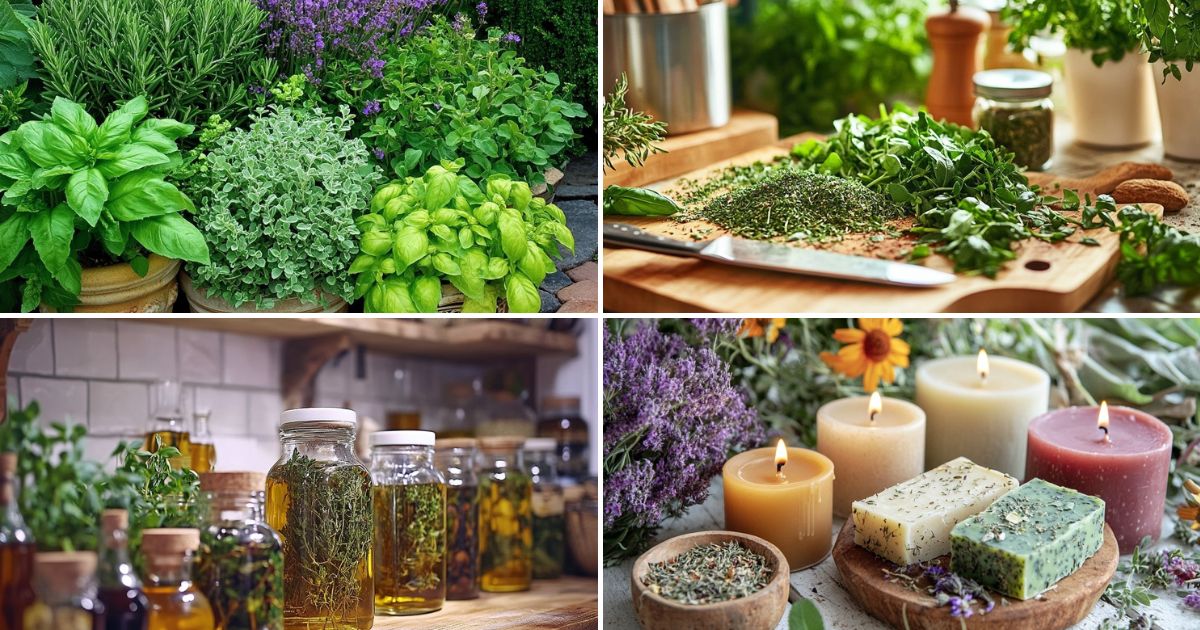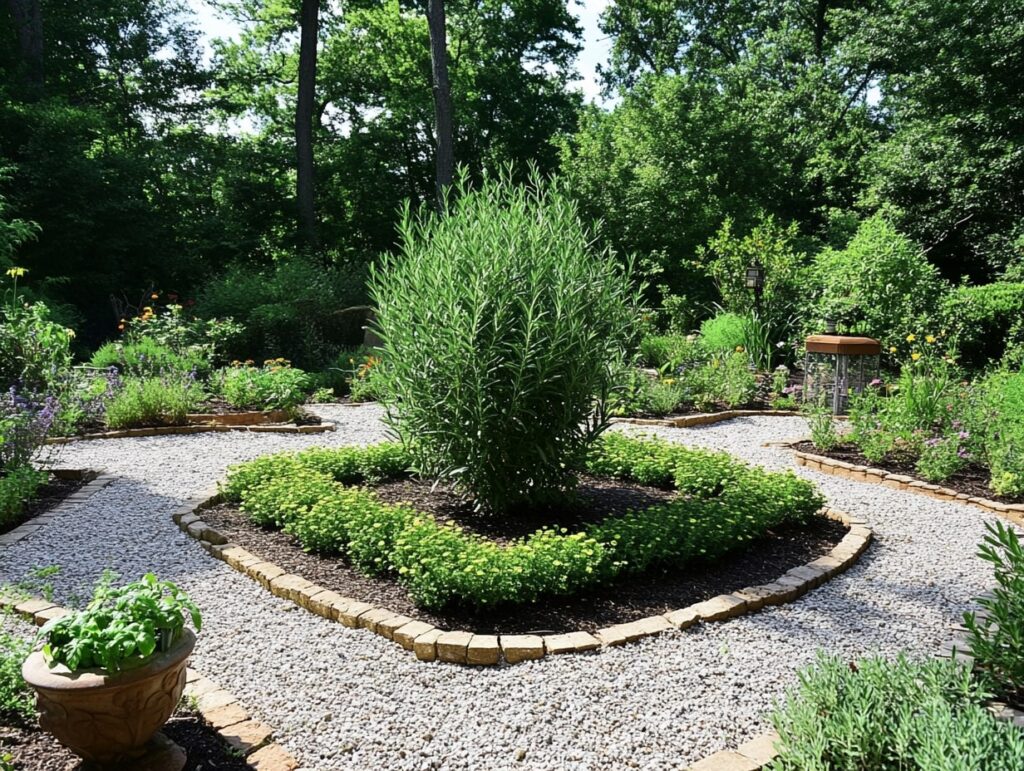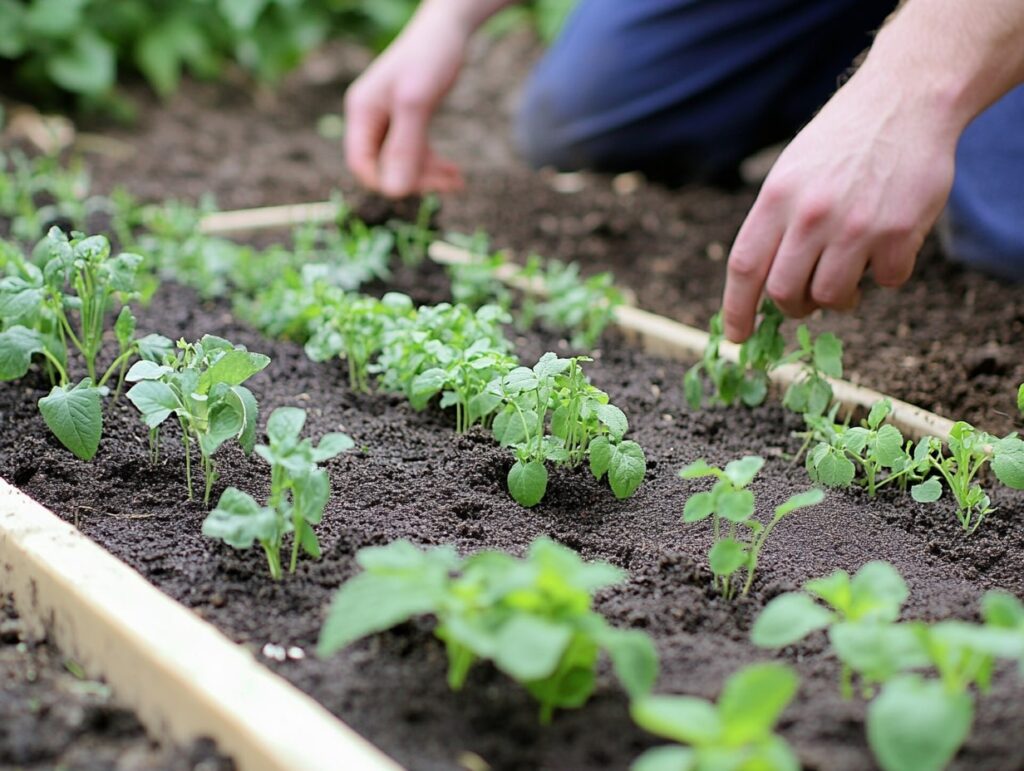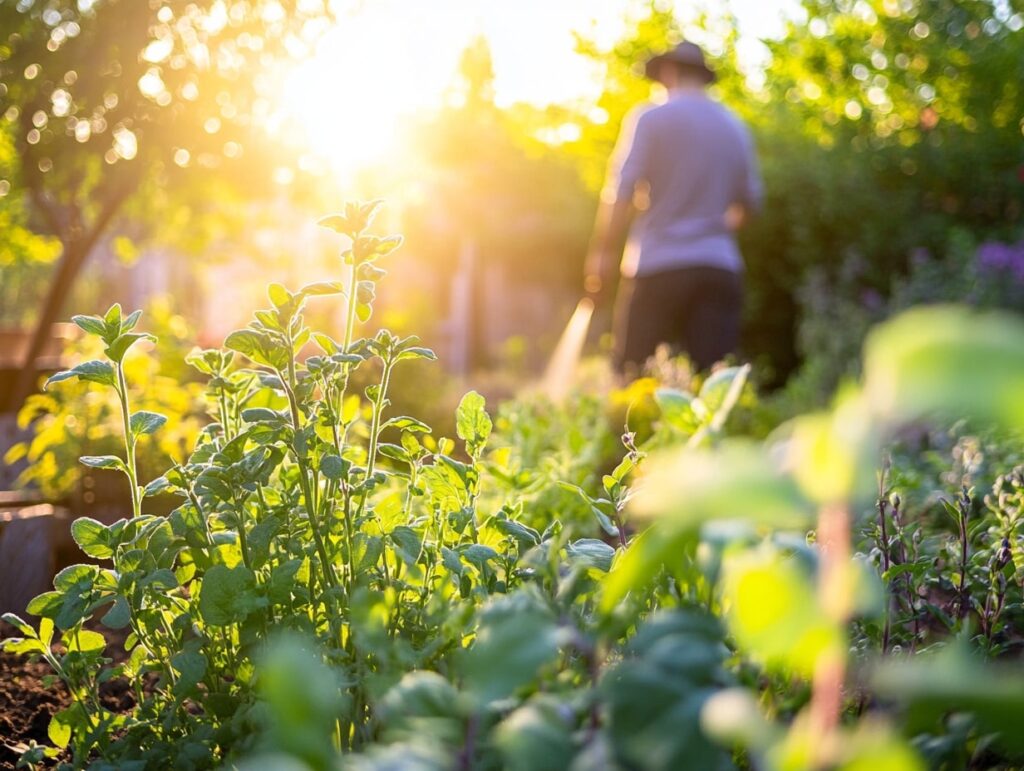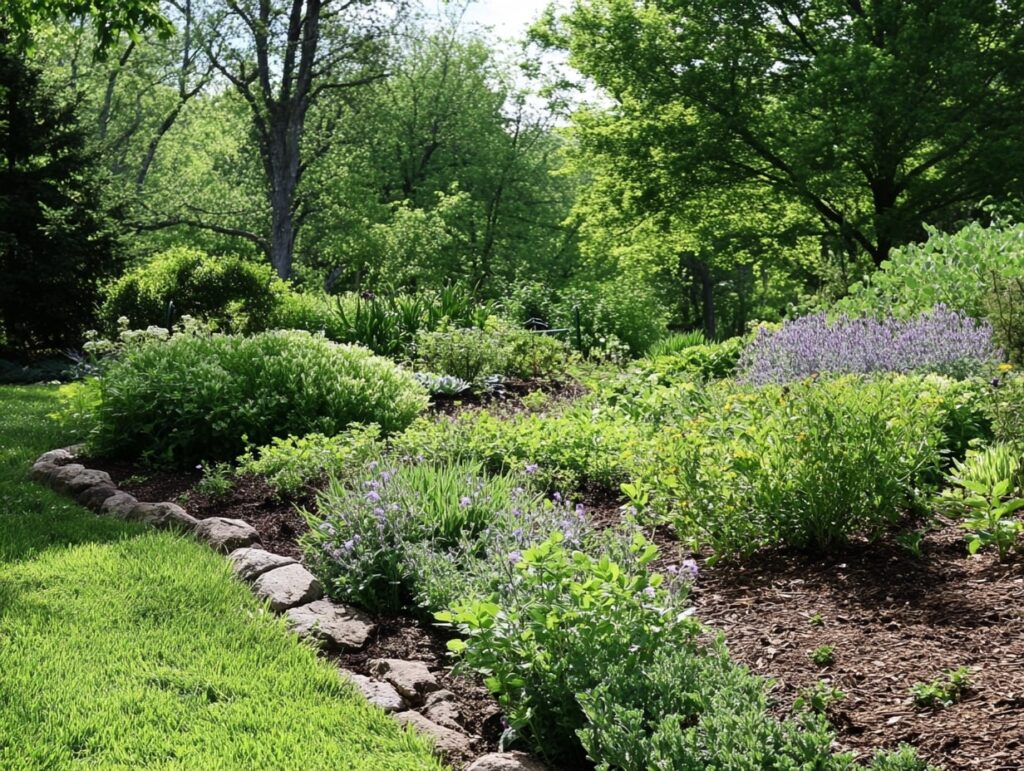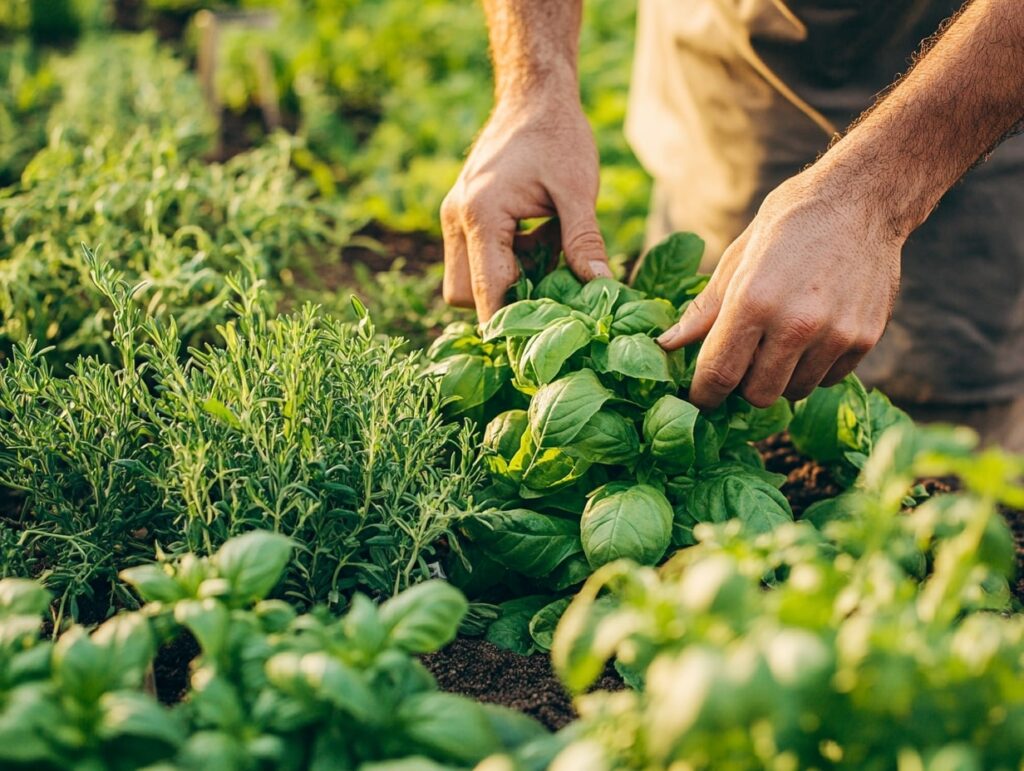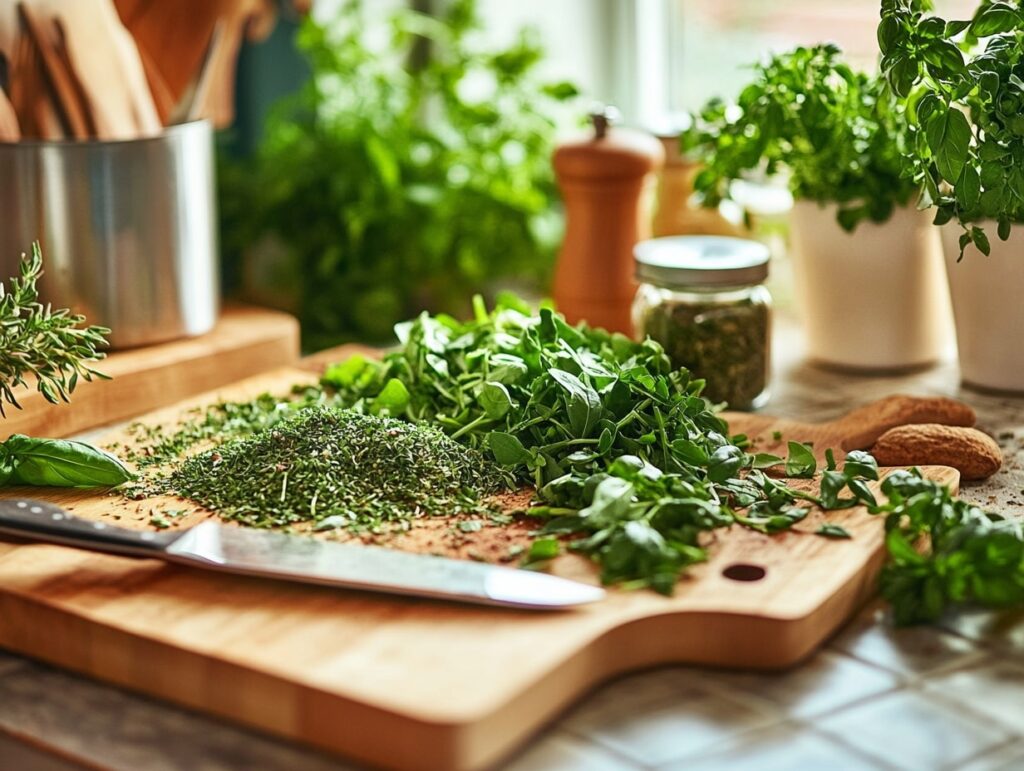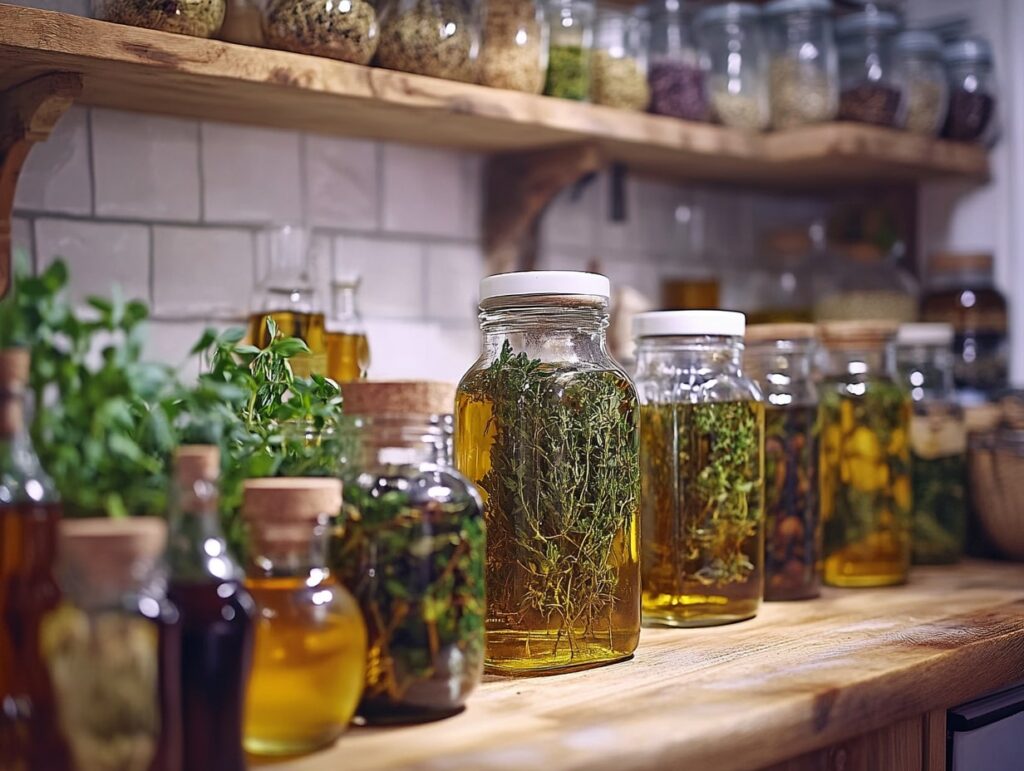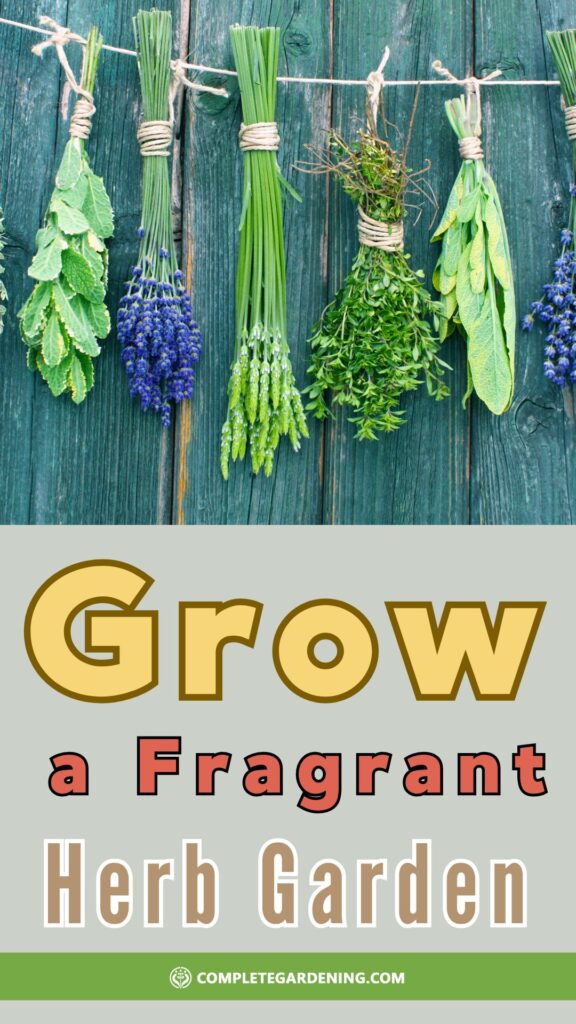Imagine stepping out into your yard and being greeted by the delicious aromas of rosemary, lavender, and mint. Growing a fragrant herb garden is not only easy but also incredibly rewarding.
These herbs can be used in cooking, teas, and even homemade beauty products.
To get started, you’ll need to select herbs that are well-suited to your climate and soil. Basil, thyme, and sage are excellent choices for beginners. Plant them in a sunny spot, and provide regular watering to ensure robust growth.
Once your garden is thriving, the joy of harvesting begins. Picking herbs at their peak means more flavor and fragrance to enjoy in your recipes or DIY projects. Plus, tending to your garden can be a relaxing and satisfying hobby, perfect for unwinding after a busy day.
Planning Your Fragrant Herb Garden
Choosing the right location and selecting suitable fragrant herbs are key steps in growing a successful herb garden. Thoughtful design and layout ensure that your garden is both functional and visually appealing.
Choosing the Right Location
Proper location is crucial for your herb garden. First, select a spot that gets plenty of sunlight, preferably at least 6 hours a day. Most fragrant herbs thrive in sunny conditions.
Second, check the soil quality. Well-draining soil is essential. If your garden has heavy clay soil, consider adding compost or using raised beds.
Finally, think about accessibility. Plant your herbs close to your kitchen or a frequently visited area. Having easy access will encourage frequent harvesting and maintenance.
Selecting Fragrant Herbs
Choose a variety of herbs known for their pleasant aromas. Popular choices include lavender, rosemary, mint, and basil.
Consider the growth habits and needs of each herb. For example, mint can be invasive, so plant it in a container. On the other hand, lavender prefers well-drained, slightly alkaline soil.
Mix annual and perennial herbs. Annuals like basil need replanting, while perennials like rosemary come back year after year.
Design and Layout Ideas
Start with a central focal point, such as a large rosemary bush or an ornamental feature. Surround it with smaller herbs. This creates visual interest and a natural flow.
Use pathways to divide different sections. Gravel paths or stepping stones work well. Label your herbs with decorative markers.
Combine herbs with similar watering needs. This keeps maintenance simple. For example, group rosemary and thyme together, as they both prefer drier conditions.
Feel free to experiment with container gardens if space is limited. Pots can be arranged on patios or balconies, bringing fragrance and beauty to smaller spaces.
Planting Your Herbs
Creating a fragrant herb garden starts with careful planning and preparation. This ensures healthy growth and a bountiful harvest.
Soil Preparation
Start by selecting a well-drained soil. Herbs like rosemary, thyme, and oregano prefer slightly sandy soil. Test the pH level of your soil, aiming for a range of 6.0 to 7.0.
Enhance soil quality with organic matter. Compost or aged manure can improve texture and nutrients. Avoid using fresh manure as it may burn plants. Rake the soil to break up any clumps and create a fine tilth.
Planting Techniques
Spacing is crucial in herb gardening. Overcrowded plants can lead to mildew and reduce air circulation. Space most herbs 12 to 18 inches apart.
Planting depth is also vital. Place seeds barely below the surface, as some herbs need light for germination. For transplanting, dig a hole deep enough to cover the root ball.
Watering carefully after planting helps settle the soil around the roots. Use a gentle spray to avoid washing away seeds. Mulch lightly to retain moisture without suffocating the young plants.
Timing and Seasonal Tips
Plant herbs in the spring after the last frost. This ensures your seeds or seedlings won’t suffer frost damage. Some herbs, like parsley and cilantro, are cool-season herbs and can be planted earlier.
Check the hardiness zone for your area. This helps determine the best planting times for each herb. For instance, basil prefers warmer temperatures, while chives can handle cooler weather.
Consider planting in succession to have a continuous harvest. Stagger your plantings every few weeks to extend fresh herb availability.
Keep these factors in mind as you plant your fragrant herb garden, and you’ll set a solid foundation for your growing season.
Caring for Your Herb Garden
Proper care for your herb garden involves regular watering, removing weeds and adding mulch, and managing pests and diseases.
Watering Essentials
Herbs thrive with consistent moisture. Water your herbs in the morning to prevent mold and mildew. Aim to keep the soil slightly moist, not soggy. A general rule is to water when the top inch of soil is dry.
Container gardens may need more frequent watering than ground-planted gardens.
Use a soaker hose or drip irrigation for even moisture distribution.
Avoid wetting the leaves, as it can lead to mold. Regularly check the soil moisture and adjust as necessary, especially during hot weather.
Weeding and Mulching
Weeds compete with your herbs for nutrients, water, and light. Regularly remove weeds to maintain a healthy garden.
Apply a 2-3 inch layer of mulch around your herbs to conserve moisture and suppress weed growth. Organic mulches like straw, wood chips, or compost are excellent choices.
Reapply mulch as it decomposes or as needed to maintain its depth.
Hand-pull weeds carefully to avoid disturbing the herb roots. Mulching not only helps with weeds but also insulates the soil, maintaining a stable temperature.
Pest and Disease Management
Inspect your herbs regularly for pests such as aphids, spider mites, and caterpillars. Early detection is crucial.
Use natural remedies like neem oil spray or insecticidal soap to treat infestations.
Encourage beneficial insects such as ladybugs and predatory wasps by planting companion plants.
Rotate herb crops each year to prevent soil-borne diseases. Good air circulation helps reduce fungal issues.
Remove any diseased plants promptly to prevent the spread of pathogens.
Keeping your garden clean by removing debris and fallen leaves also helps in disease prevention. A healthy garden grows best with vigilant, consistent care.
Harvesting Herbs
Harvesting herbs at the right time is crucial to preserve their fragrance and flavor. Factors like the time of day and the stage of growth can greatly influence the quality of your harvest.
Best Practices for Harvesting
The ideal time to harvest herbs is in the morning after the dew has dried but before the sun is too hot. This ensures the highest concentration of essential oils. Use sharp scissors or pruning shears to avoid damaging the plants.
Cut branches just above a leaf node to encourage new growth. For annual herbs like basil, harvest them often to prevent flowering, which can reduce their flavor. For perennial herbs like rosemary, avoid cutting back more than one-third of the plant at a time to maintain its vigor.
Drying and Storing
After harvesting, rinse the herbs gently in cool water to remove any dirt or pests. Pat them dry with a clean towel or let them air dry. For drying, tie small bunches with string and hang them in a dark, well-ventilated area. You can also use a dehydrator on the lowest setting.
Once dried, store herbs in airtight containers away from direct sunlight. Glass jars with tight-fitting lids or metal tins work well. Label the containers with the herb’s name and the date of harvest. Properly dried and stored herbs can maintain their potency for up to a year.
Creative Uses for Fragrant Herbs
Fragrant herbs can add rich flavors to meals, health benefits through remedies, and pleasing scents to personal care products and home environments.
Culinary Creations
Fragrant herbs transform cooking. Basil, thyme, and oregano can elevate pasta dishes and salads. Add rosemary to roasted meats for an earthy touch. Use mint in desserts and cocktails.
Create herb-infused oils and vinegars for an extra burst of taste. For baking, lavender adds a unique flavor to cookies and cakes. Herb butter can be made by blending softened butter with chopped herbs. These small additions make your culinary creations vibrant and aromatic.
Herbal Remedies and Crafts
Herbs aren’t just for cooking; they have therapeutic uses too. Chamomile is known for its calming properties and can be used in teas to promote relaxation. Peppermint oil is often used to relieve headaches and muscle pain.
Crafts such as homemade soaps and candles benefit from herbs like lavender and lemongrass. They add natural fragrance and offer mild skin benefits. Making herbal sachets to place in drawers can keep your clothes smelling fresh.
Perfumes and Aromatherapy
Harness the power of herbs in personal care. Rosemary, lavender, and sage can be used to create your own perfumes. Mix essential oils with a carrier liquid to formulate bespoke scents.
Aromatherapy benefits from herbs like eucalyptus and peppermint. Use these in diffusers to clear the mind and enhance focus. Add lavender or chamomile to your bath for a soothing experience that helps you unwind.
Fragrant herbs offer a variety of uses that enrich different aspects of your life with their natural, pleasant scents and practical benefits.
A fragrant herb garden is a delightful and rewarding addition to any home. By carefully selecting a sunny location, choosing a variety of aromatic herbs, and planning a thoughtful layout, you can create a beautiful and functional garden.
With proper care, including regular watering, mulching, and pest management, your herbs will thrive and provide fresh, flavorful additions to your meals, therapeutic benefits, and delightful scents for your home.
Whether you’re cooking, crafting, or simply enjoying the garden’s beauty, a well-planned herb garden offers endless pleasures and practical uses.
